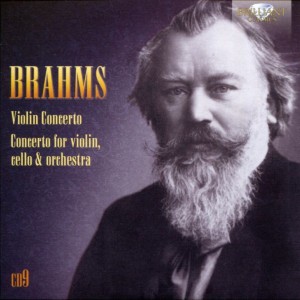 I’ll say one thing for Brahms: he loves to fill his compositions with lots of notes.
I’ll say one thing for Brahms: he loves to fill his compositions with lots of notes.
But not in a Mozartian way so that the compositions are still melodic and memorable.
They’re just busy.
Perhaps the word I’m looking for is jumbled.
In my opinion, Beethoven – my favorite Classical composer – used notes more judiciously, with lots of space for shading between the light and dark, the somber and joyful. More importantly, Beethoven had a tremendous knack for writing melodies that touched me deeply.
Brahms, on the other hand, seems to have a profound grasp of the instruments – sort of like how a potter works with clay – yet he lacks an awareness of how the instruments could be used to create an aural landscape so compelling one could not possibly turn away.
Art for art’s sake.
In other words, competence, perhaps even mastery, yet lacking that one small (yet essential) element I refer to as magic.
That’s not to say Brahms is a slacker, or a guy without sizable talent. Not at all. I can hear he’s gifted. Hell, Helen Keller could hear he’s gifted.
He’s just not offering me something to sink my teeth, or – more importantly – my heart into. (That’s probably a mixed metaphor since, obviously, a heart lacks teeth. But you get what I mean.)
Here’s what I’m listening to today, along with the musicians performing it:
Violin Concerto in D Op. 77
Yehudi Menuhin violin
Berliner Philharmoniker
Rudolf Kempe conductor
The ending to Violin Concerto in D Op. 77 Movement I (“Allegro ma non troppo”) is a scorcher for a violinist. A person could really show off playing that piece. Yet, for all those furious notes, I don’t feel moved an inch.
According to its entry on Wikipedia:
The Violin Concerto in D major, Op. 77, was composed by Johannes Brahms in 1878 and dedicated to his friend, the violinist Joseph Joachim. It is Brahms’s only violin concerto, and, according to Joachim, one of the four great German violin concerti:
The Germans have four violin concertos. The greatest, most uncompromising is Beethoven’s. The one by Brahms vies with it in seriousness. The richest, the most seductive, was written by Max Bruch. But the most inward, the heart’s jewel, is Mendelssohn’s.
The work was premiered in Leipzig on January 1, 1879, by Joachim, who insisted on opening the concert with the Beethoven Violin Concerto, written in the same key, and closing with the Brahms. Joachim’s decision could be understandable, though Brahms complained that “it was a lot of D major—and not much else on the program.” Joachim was not presenting two established works, but one established one and a new, difficult one by a composer who had a reputation for being difficult.[6] The two works also share some striking similarities. For instance, Brahms has the violin enter with the timpani after the orchestral introduction: this is a clear homage to Beethoven, whose violin concerto also makes unusual use of the timpani.
Brahms conducted the premiere. Various modifications were made between then and the work’s publication by Fritz Simrock later in the year.
Brahms was 45 when he composted this piece of music.
Concerto for Violin, Cello & Orchestra in A minor Op. 102
Emmy Verhey violin
Janos Starker cello
Amsterdam Philharmonic Orchestra
Arpad Joo conductor
According to its entry on Wiki:
The Double Concerto was Brahms’ final work for orchestra. It was composed in the summer of 1887, and first performed on 18 October of that year in the Gürzenich in Köln, Germany. Brahms approached the project with anxiety over writing for instruments that were not his own. He wrote it for the cellist Robert Hausmann, a frequent chamber music collaborator, and his old but estranged friend, the violinist Joseph Joachim. The concerto was, in part, a gesture of reconciliation towards Joachim, after their long friendship had ruptured following Joachim’s divorce from his wife Amalie. (Brahms had sided with Amalie in the dispute.)
The concerto makes use of the musical motif A-E-F, a permutation of F-A-E, which stood for a personal motto of Joachim, Frei aber einsam (“free but lonely”). Thirty-four years earlier, Brahms had been involved in a collaborative work using the F-A-E motif in tribute to Joachim: the F-A-E Sonata of 1853.
Brahms was 54 when he composted this violin concerto.
Of the two compositions on today’s CD, I prefer the latter – the “Double Concerto.” It’s grander. Plus, I love the doubled violin and cello playing with each other. Hearing those two instruments together is intriguing. I’m hooked.
